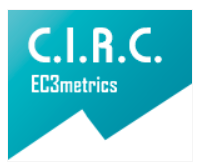Quantifiers, Pronominal and Reflexive Anaphors in Children with Specific Language Impairment
Cuantificadores, Anáforos Pronominales y Reflexivos en Niños con Trastorno Específico de Lenguaje
Main Article Content
Purpose: In the present study, it sought to determine the performance presented by children with SLI regarding the development of the Principles A and B of the Binding Theory.
Methodology: Cross-sectional design with a sample of 50 pre-school Chilean children from 6 years old, which was divided into a group of children with SLI (n = 25) and a group
of children with typically developing language (n = 25). Reference Pronominal Test was applied and the measurements were compared with T-Student test in SPSS. Results: Non-exist
ent significant differences in the development of the principle A between the two groups (p = 0.348 and p = 0.188 for equivalence in non-equivalence). Significant differences
were found in the assessment of Principle B (p = 0.011 in the condition of equivalence and p = 0.028 for non-equivalence), the same as the quantifiers (p <0.001). Conclusions:
Both the development of Principle B and quantifiers, children with SLI have a significantly lower performance, suggesting that they turn to semantic knowledge and not syntactic
and to respond to such stimuli. Reflective Gender neutrality would influence the understanding of them, which is not found in other languages such as English.
Downloads
Publication Facts
Reviewer profiles N/A
Author statements
Indexed in
- Academic society
- Bogotá: Corporación Universitaria Iberoamericana
- Publisher
- Bogotá: Corporación Universitaria Iberoamericana
Article Details
Aguado, G. (2004). Trastorno específico de lenguaje: diversidad y formas clínicas. Revista Chilena de Fonoaudiología, 3, 48-74.
Blom, E., Schaeffer, J. y Tsimpli, I. (2015). Reference and referentiality in native and learner grammars. Lingua, 156, 1-8
Bosch, L. y Serra, M. (1997). Grammatical morphology deficits of spanish children with specific language impairment. En A. Baker, M. Beers, M. Bol, J. de Jong y G. Leemans,
Child Language Disorders in a Cross-Linguistic Perspective (pp. 33-45). Amsterdam: Universiteit van Amsterdam.
Brown, L., Sherbenou, R. y Jonshen, S. (2000). Test de Inteligencia no verbal TONI 2. Madrid, España: TEA Ediciones, S.A.
Cole, P. y Yanti, G. (2015). Grammar of binding in the languages of the world: innate or learned? Cognition, 141, 138-160
Chien, Y. y Wexler, K. (1990). Children’s knowledge of locality conditions in binding as evidence for the modularity of syntax and pragmatics. Language Acquisition, 1, 225 - 295
Chomsky, N. (1984). Lectures on Government and Binding. Dordrecht: Foris
Chomsky, N. (2002). Syntactic Structures. Berlín: Mouton de Gruyter
Franck, J. y Lassotta, R. (2012). Revisiting evidence for lexicalized word order in young children. Lingua, 122, 92-106
Fonteneau, E., y Van der Lely, H. (2004). Non-local dependencies in sentence processing in adults: An ERP investigation. Conference. Architectures and Mechanisms for Language
Processing (AMLAP). presented at the Aix en Provence, France, Aix en Provence, France
Grodzinsky, Y. y Kave, G. (1993). Do children really know condition A? Language Acquisition, 3, 41-54.
Guasti, M.T. (2002). Language acquisition: the growth of Grammar. Cambrigde: Cambrigde University Press.
Hernández, R., Fernández, C. y Baptista, P. (2010). Metodología de la Investigación (5ta edición). México: McGraw Hill / Interamericana Editores, S.A. de C.V.
Hresko, W.P., Reid, D.K. y Hammill, D.D. (1999). Examiner's manual: Test of Early Language Development. (3rd edition). Austin, TX: Pro-ed.
Joanisse, M. y Seidenberg, M. (1998). Specifi language impairment: a déficit in grammar or processing? Trends in Cognitive Sciences, 2, 240-247
Leonard, L. (2014). Children with Specific Language Impairment (2nd edition) Massachusetts: United States of America: MIT Press
McKee, C. (1992). A comparison of pronouns and anaphors in Italian and English acquisition. Language Acquisition, 2, 21-54.
Mendoza, E. (2001). Trastorno específico de lenguaje. Madrid, España. Ediciones Pirámide.
Restrepo, M. A. y Kruth, K. (2000). Grammatical characteristics of a Spanish-English bilingual child with specific language impairment. Communication Disorders Quarterly, 21, 66-76.
Rooryck, J. y Vanden, G. (2015) Morphological transparency and the Delay of Principle B Effect. Lingua, 155, 121-139
Sportiche, D. (2013). Binding Theory: Structure sensitivity of referential dependencies. Lingua, 130, 187-208
Stavrakaki, S. y Van der Lely, H. (2010). Production and comprehension of pronouns by Greek children with specific language impairment. British Journal of Developmental
Psychology, 28, 189-216.
Van der Lely, H. (1997). Advanced-Syntactic test of Pronominal reference (A-STOP). Disponible por el autor: Departamento de Trastornos de la Comunicación y Neurociencia
cognitiva, Universidad de Londres, Londres, Reino Unido.
Van der Lely, H. (2004). Evidence for and implications of a domain-specific grammatical deficit. In L. Jenkins (Ed.), J. Rooryck y P. Pica (Ed.), The genetics of language
(Vol. 1-Chapter 6, pp. 117-144.). Elsevier, Oxford.Abstract
Van der Lely, H. (2005). Domain-specific cognitive systems: insight from grammatical-SLI. TRENDS in Cognitive science, 9, 53-59.
Van der Lely, H. y Stollwerck, L. (1996). Grammatical Specific Language Impairment in Children: An Autosomal Dominant Inheritance? Brain and Lnguage, 52, 484-504
Van der Lely, H. y Stollwerk, L. (1997). Binding theory and grammatical specific language impairment in children. Cognition, 62, 254-290.

















